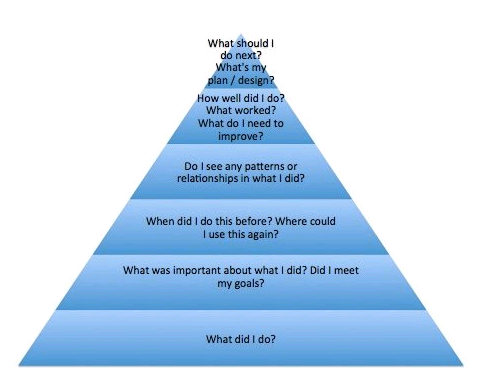

How to Write a Portfolio Essay

How to Make a Portfolio for School
Throughout students' academic careers, they may be required to create a portfolio of their achievements after completing various stages of school. For instance, a student graduating from sixth grade may need to create a portfolio featuring their favorite projects and assignments from the year, as well as any tests or exams they were proud of. College students, on the other hand, may need to create a portfolio showcasing the best work they've done, which is very common in art and teaching majors. Before submitting a physical portfolio or an online writing portfolio, however, it's necessary to write an essay to summarize what's inside.
Select Your Pieces
Before you can write your portfolio essay, you must select the pieces you want to include inside of your portfolio. Without knowing what's going to be inside of your portfolio, it's difficult to write the essay. In some cases, your teacher or professor will tell you what pieces needed to be included in your portfolio. If it's an online writing portfolio, you'll need to upload the documents instead of putting them into a binder. Whatever format your portfolio will be in, there's also a chance that your teacher may not give you guidelines at all and will merely give you suggestions. If this is the case, then try to showcase your work through as many mediums as possible. Portfolios are best when there is a bit of a variety.
The About Me Portfolio Page Focus
Even if your portfolio is diversified, it's necessary that you choose a focus in order to write your essay. Otherwise, your portfolio essay may be a bit unorganized. Your portfolio is a conclusion of everything you've done over the last year or semester. Think about why you chose the pieces. Was it because it was your best work, or was it because it was an assignment which challenged you? Considering these things can help you design your about me portfolio page, where the reader can really get a glimpse of what kind of student you are. Therefore, try to have a solid topic to focus on that is directly related to your experiences with the course.
Write an Introduction
Once you've gathered the materials that you'll put in your portfolio and decided on your focus, it's time to get started on the actual writing part. The best way to start an essay is by writing an introduction first. And, unlike most other essays, you can actually write the portfolio essay in the first person (unless your teacher says otherwise). This is essentially a formal version of an about me portfolio page, in which you're both the narrator and the subject. Start your introduction by telling the reader who you are, what your portfolio is centered around (for instance, the name of the course or "My Fifth Grade Year") and offer a little description of what's to come.
Talk About the Pieces Inside
In the body of your portfolio essay, you can briefly discuss what the reader can expect to find inside. If you write three body paragraphs, the first paragraph can discuss what you felt before going into the class or year, such as your worries, concerns and what you were excited about. The second body paragraph can be about certain things you remember learning or doing throughout the year that stuck out to you, while the third paragraph can be a reflection on what you gained from the course and how you've grown because of it. Each of these paragraphs should mention a piece inside your portfolio that's directly related to the content within the paragraph. For example, if you're talking about the concerns you had before starting the year, you can mention a piece you've included that showcases this, perhaps a letter you wrote to yourself on the first day of school.
Devise Your Portfolio Essay Conclusion
Finally, in order to wrap it all up, you can write your portfolio essay conclusion by discussing your proudest moments and your strengths alongside your desired improvements for the coming year. You can discuss a challenge and how you overcame it, or one of your best achievements from the year or semester. You can even talk about the experience of creating a physical portfolio or online writing portfolio because in some college programs, your portfolio is like your thesis. This can be part of your third body paragraph or a separate conclusion.
Related Articles

How to Create an English Class Portfolio

Steps in Writing a Reflection Paper

How Is a Paralegal Portfolio Done?

How to Write a Film Report


How to Write a Chapter Summary Template

How to Start a Critique Paper

How to Check Your UCLA Application Status

How to Write an Advantages and Disadvantages Essay
- Solid Essay: How to Write a Portfolio Essay
- Study Moose: What is a Portfolio?
Hana LaRock is a freelance content writer from New York, currently living in Mexico. Before becoming a writer, Hana worked as a teacher for several years in the U.S. and around the world. She has her teaching certification in Elementary Education and Special Education, as well as a TESOL certification. Please visit her website, www.hanalarockwriting.com, to learn more.

13 Reflection and Portfolios
The final assignment in your English course will include a reflective essay in which you describe your growth as a writer over the course of the semester. This activity of reflecting on your growth and performance is what is called a metacognitive activity: one in which you think and write about your learning.
Writing a formal reflective essay may be a new thing for you, so this chapter will provide an overview of why we write reflections on our learning and how to approach a reflection assignment.

Student reflection about their thinking is such a crucial part of the learning process. You have come to this course with your own writing goals. Now is a good time to think back on your writing practices with reflective writing, also called metacognitive writing. Reflective writing helps you think through and develop your intentions as a writer. Leveraging reflective writing also creates learning habits that extend to any discipline of learning. It’s a set of procedures that helps you step back from the work you have done and ask a series of questions: Is this really what I wanted to do? Is this really what I wanted to say? Is this the best way to communicate my intentions? Reflective writing helps you authenticate your intentions and start identifying places where you either hit the target or miss the mark. You may find, also, that when you communicate your struggles, you can ask others for help! Reflective writing helps you trace and articulate the patterns you have developed, and it fosters independence from relying too heavily on an instructor to tell you what you are doing.
Reflective Learning
Reflective thinking is a powerful learning tool. As we have seen throughout this course, proficient readers are reflective readers, constantly stepping back from the learning process to think about their reading. They understand that just as they need to activate prior knowledge at the beginning of a learning task and monitor their progress as they learn, they also need to make time during learning as well as at the end of learning to think about their learning process, to recognize what they have accomplished, how they have accomplished it, and set goals for future learning. This process of “thinking about thinking” is called metacognition. When we think about our thinking—articulating what we now know and how we came to know it—we close the loop in the learning process.
How do we engage in a reflection? Educator Peter Pappas modified Bloom’s Taxonomy of Learning to focus on reflection:

This “taxonomy of reflection” provides a structure for metacognition. Educator Silvia Rosenthal Tolisano has modified Pappas’s taxonomy into a pyramid and expanded upon his reflection questions:

By making reflection a key component of our work, students realize that learning is not always about facts and details. Rather, learning is about discovery.
How is reflective writing in the academic setting different from journaling or writing in a diary?
If you write in a diary or a journal, recording your thoughts and feelings about what has happened in your life, you are certainly engaging in the act of reflection. Many of us have some experience with this type of writing. In our diaries, journals, or other informal spaces for speaking – or writing- our mind, write to ourselves, for ourselves, in a space that will largely remain private.
Your reflection essay for college courses will contain some of those same features:
- The subject of the reflective essay is you and your experiences
- You can generally use the first person in a reflective essay
But writing academic reflections, like the one that is due for the English 100/101 portfolio assignment, is a bit different from journaling or keeping a diary:
What can be gained from metacognitive activities that ask you to reflect on your learning and your performance as a writer?
One of the major goals in any First-Year Writing class is to encourage students’ growth as writers. No one is expected to be a perfect writer at the end of the semester. Your instructor’s hope, however, is that after 16 weeks of reading, writing, and revising several major essays, you are more confident, capable, and aware of yourself as a writer than you were at the beginning of the semester. Reflecting on the process that you go through as you write – even if your writing is not perfect – can help you to identify the behaviors, strategies, and resources that have helped you to be successful or that could support your future success. In short, reflecting on how you write (or how you have written during a particular semester) can be quite powerful in helping you to identify areas where you have grown and areas where you still have room for more growth.
How can I write a reflective essay?
As with any essay, a reflective essay should come with its own assignment sheet. On that assignment sheet, you should be able to identify what the purpose of the reflective essay is and what the scope of the reflection needs to be. Some key elements of the reflective essay that the assignment sheet should answer are:
- What, exactly, the scope of the reflection is. Are you reflecting on one lesson, one assignment, or the whole semester?
- Do you have detailed guidelines, resources, or reference documents for your reflections that must be met?
- Is there a particular structure for the reflection?
- Should the reflection include any outside resources?
If you are struggling to find the answers to these questions, ask your professor!
Another wonderful resource for writing a reflective essay comes from Writing Commons , in the article “Writing an Academic Reflection Essay” . This article offers great information about the following:
- What it means to be “academic” or “critical” and at the same time personal and reflective
- How you can achieve focus in a reflective essay
- What “evidence” is in a reflective essay
Prior Learning
Fast and well-traveled roads may make for a quicker trip, but they also miss the nuance and beauty of the scenic route. For some, the long way around is just worth it. The adventures, mishaps, connections, and coincidences that happen along the way are a teacher like no other.
If this sounds familiar to you when you think about your journey in education, then this textbook is for you. Let’s take another look at those years of experiential learning along the scenic route: your work, travel, volunteering, community involvement, entrepreneurship, and whatever else you’ve explored while not in the traditional classroom setting.
Let’s reconsider that experience as Prior Learning, and dig in to see what you’ve learned on the way.
The portfolio is composed of an assortment of documents and artifacts demonstrating previous college-level learning.
- Examines your personal motivations and educational goals in the context of learning and how you will achieve them.
- This portion should address each course objective found on the course syllabus, and demonstrate that you have mastered the objectives. Showcase how your learning applies to the objectives for a specific course.
- You will need to supply documentation to support the narrative.
- Documentation is as individual as the learner, and it may include items such as sample work products, training certificates, workplace evaluations, letters of recommendation, and/or photographs.
The Educational Narrative is asking for a very specific thing from you so that your reviewers can understand the learning you’ve done and relate it to the course you’re challenging.
What is that thing it’s asking for?
A story . Several stories, actually.
The word Narrative means “story,” of course, so this component is asking you to tell the story of your learning. To tell that story, you’ll need to have several examples that clearly demonstrate your expertise with the course’s subject matter. And these examples need to be specific . Here’s why:
In creative writing, teachers often say that the universe is in the specific. The more detailed the description, the better the reader can visualize the characters and scene. Take, for example, this line:
We got dressed up and went to the concert.
Who are they? What’d they wear? How old were they? What kind of concert was it? Who was playing? None of that is apparent, so every reader sees something different.
But what if that line was written like:
We teased our hair to the ceilings, doused it in White Rain, snapped on spandex and pleather. We tore out of the suburbs, left a mile-long streak of rubber on our way to go see Twisted Sister at CBGB’s.
Now can you see it? From the first description, it could’ve also easily been a black-tie evening at the Philharmonic, or a 7th Grade Band Concert, or… It’s the specifics that make the example come alive.
That’s your task in the Educational Narrative.
Though, of course, you’ll be writing about your class experiences and not an 80s hair band (unless you are drawing connections from when you were a member of an 80s hair band…).
ATTRIBUTIONS
- Content Adapted from Excelsior Online Writing Lab (OWL). (2020). Excelsior College. Retrieved from https://owl.excelsior.edu/ licensed under a Creative Commons Attribution-4.0 International License .
- Content Adapted from Composition II. Authored by : Alexis McMillan-Clifton. Provided by : Tacoma Community College. Located at : http://www.tacomacc.edu .
- Reflection. Authored by : Daryl Smith O’Hare. Provided by : Chadron State College. Project : Kaleidoscope Open Course Initiative. License : CC BY: Attribution
- Image of woman against wall. Authored by : VisualAge. Located at : https://flic.kr/p/CScnK . License : CC BY-NC-ND: Attribution-NonCommercial-NoDerivatives
- Content Adapted from Composition II. Authored by : Elisabeth Ellington, Ph.D.. Provided by : Chadron State College. Located at : http://www.csc.edu/ . Project : Kaleidoscope Open Course Initiative. License : CC BY: Attribution
- Image of Taxonomy. Authored by : Peter Pappas. Located at : http://www.peterpappas.com/images/2011/08/taxonomy-of-reflection.png . Project : Copy/Paste. License : CC BY-NC: Attribution-NonCommercial
- Content Adapted from A Guide to Rhetoric, Genre, and Success in First-Year Writing by Emilie Zickel is licensed under a Creative Commons Attribution-NonCommercial-ShareAlike 4.0 International License ,
- Image of pyramid. Authored by : Silvia Rosenthal Tolisano. Located at : http://langwitches.org/blog/2011/06/20/reflectu00adreflectingu00adreflection/ . License : CC BY-NC-SA: Attribution-NonCommercial-ShareAlike
- Content Adapted from Prior Learning Portfolio Development by Baker Lawley is licensed under a Creative Commons Attribution-NonCommercial-ShareAlike 4.0 International License , except where otherwise noted.
English 101: Journey Into Open Copyright © 2021 by Christine Jones is licensed under a Creative Commons Attribution-NonCommercial-ShareAlike 4.0 International License , except where otherwise noted.
Share This Book

IMAGES
VIDEO
COMMENTS
The subject of the reflective essay is you and your experiences. You can generally use the first person in a reflective essay. But writing academic reflections, like the one that is due for the English 100/101 portfolio assignment, is a bit different from journaling or keeping a diary: Personal diary/journal. Reflection essay for a course.